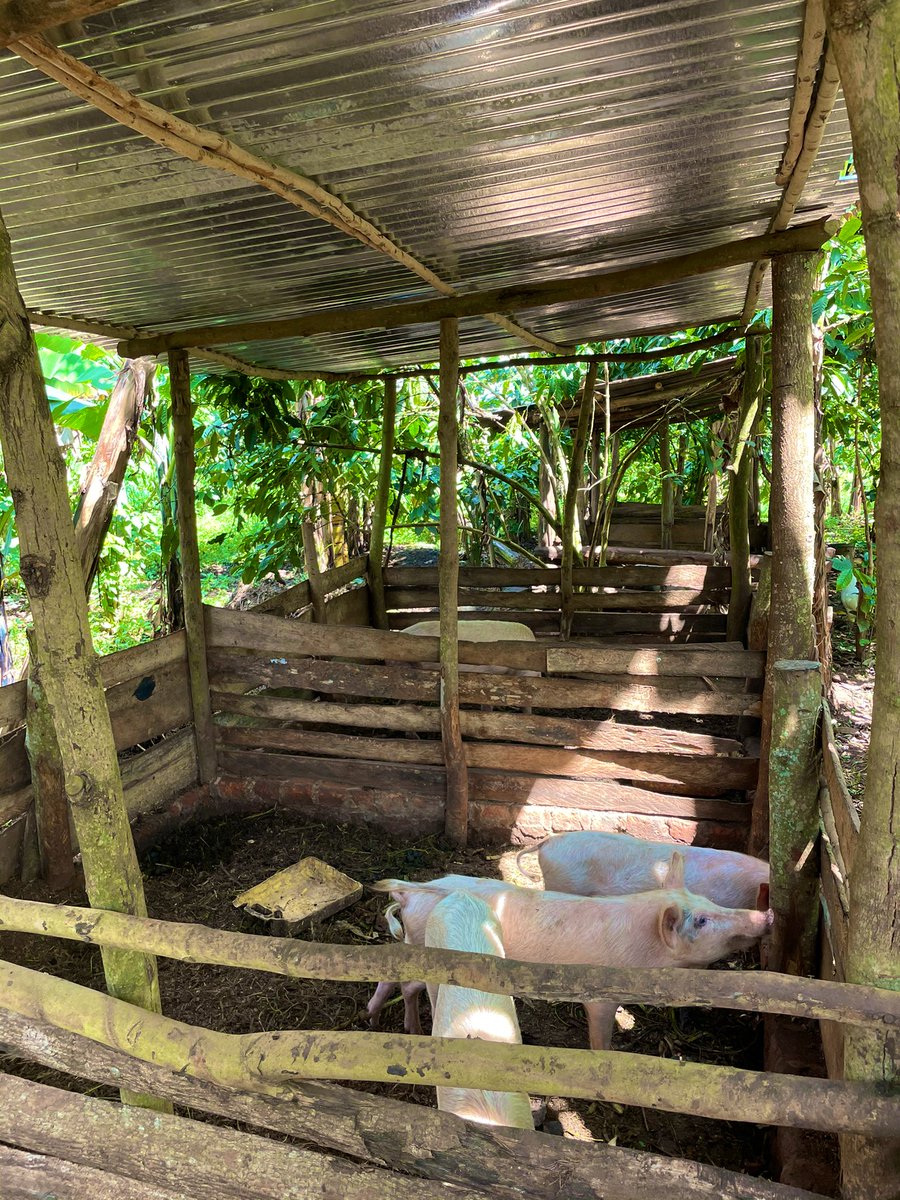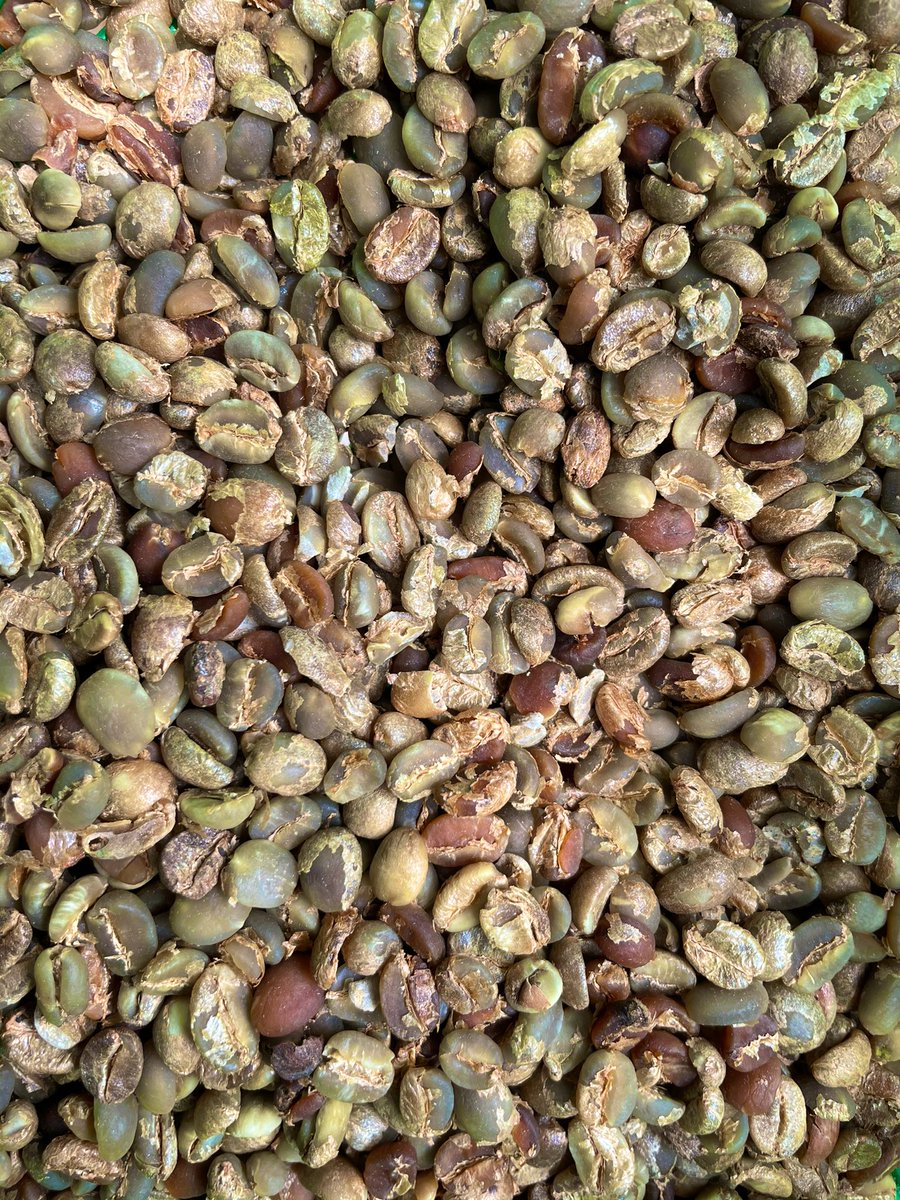
Conservation Coffee ☕️
A visual and sensory trip through the delicate balance between human livelihood and wildlife conservation. A bean to cup testimony, right from the home of the majestic Mountain Gorillas 🦍 🌳
Come along!
👇👇👇

A visual and sensory trip through the delicate balance between human livelihood and wildlife conservation. A bean to cup testimony, right from the home of the majestic Mountain Gorillas 🦍 🌳
Come along!
👇👇👇


1/ Meet Rwamiyumbu Village, 20min from Butogota Town, right on the frontier between wild and tamed. Here, rural agricultural life meets one of the most pristine and biodiverse ecosystems of the planet: Bwindi Impenetrable Forest, home to >50% of the world's 700 Mountain Gorillas
2/ The community sustains itself by growing a mix of cash and food crops. Main cash crops are tea and coffee. For food crops, the most prominent are matooke (banana), beans, cassava, peanuts, sorghum, tomatoes, onions, potatoes, sweet potatoes, and cabbages 







3/ These communities are composed of human beings of humble character, friendly personality, and resilient soul. Children are curious, energetic and full of light. They will smile, play and laugh with you. They will make you feel at home 







4/ A 10-minute hike from the village lands you at Bwindi Forest Farm, a private initiative with 10 years of history. Its vision is to empower local communities to entrepreneur in sustainable agricultural & tourist as a way to improve their livelihoods and reinforce conservation 







5/ Coffee starts and ends with nature and people working together in a romantic dance of equilibrium. It is usually grown in hilly terrains amidst the world’s tropical regions. Coffee can’t stand frosts, but appreciates altitude and cool temperatures. Specially Arabica varietals. 







6/ Only the right balance of altitude, rainfall, sunshine, shade, soil, wind and temperature will allow Arabica coffee to thrive. Only the right combination of attitude, resilience, humbleness and courage will carry a human soul to engage in such an understated complex endeavor
7/ This is how Gard (25), Moses (no one knows! He won’t say), Seth (22), and Benson (18), aided by their 4-pawed stewards Biru, Linda & company form a family-like, tight-knit stelar team. Under the leadership of Michael (28), they all dedicate their lives to this craft 



8/ Gard, Seth and Benson live full-time on the farm, they only see their families on major holidays. Moses and Michael live nearby, they come and go everyday. The whole team works year-round, 6 days a week, sunrise to sunset 







9/ The farm sits in a hill with a plateau in the middle, altitude ranging from 1310 to 1520m MASL. Between 1500 to 2000 Arabica trees are grown in two fields following organic practices. The coffee grows in balance amidst various trees, matooke, maize, beans, and wild greens
10/ Sheep, chickens and pigs are raised and cared after to generate the excrement needed to make rich liquid manure that helps to naturally maintain the soil nutrient-rich. They’re fed with the greens and grains cultivated in the farm. The circle of life! 







11/ Two harvests are held per year: April and September. The latter being the main one. But the work is year-round: weeding, pruning, mulching, manure-making and applying. Feeding, vaccinating and looking after the animals. Building, repairing, gardening. Rinse and repeat!
12/ What we call coffee beans are actually the seeds of the Coffea tree’s cherries, which grow in beautiful bunches. Ideally, each cherry will contain 2 beans. They’re harvested when they’re ripe, which is indicated by their skin turning red, or even yellow for some varietals 🍒 







13/ Once harvested, the clock starts ticking to prevent spoilage and preserve freshness. The precious cherries will begin a processing journey that entails both art and technique. The methods to achieve great taste will vary great between producers and regions
14/ At Bwindi Forest Farm, the age-old traditional “Dry Method” is used. Freshly picked cherries are spread out on ventilated surfaces to dry under the sun. They’re are raked and turned throughout the day to aerate evenly. At night or under rain, they get covered again 





15/ The “Dry Method” will go on everyday for a couple of weeks or more, depending on weather conditions. On and on, until the cherries turn dark brown and water content drops around to 11% 







16/ After being dried, coffee cherries must be de-husked, by a process usually known as “hulling”. The now-dry outer husk of the cherry is removed and the beans inside are exposed. In this case, hulling is done using a manual mill. Look close 🔍👇
17/ Next, the beans are hand sorted to remove remaining husk debris and carefully inspected for quality. Beans with significant defects in color or composition are removed to enrich the manure. Voilá! Organic green coffee beans in your hands 👌🏼 







18/ Now comes a process that within a commercial context usually takes place after packing the green beans into 45-70kg sacks and selling or exporting them to processing plants / roasters either locally or internationally. Behold, here comes the art of Coffee Roasting 🔥 🔥 🔥
19/ Coffee connoisseurs and enthusiasts prefer freshly-roasted coffee, as it is said to boast more flavor intensity, aromas, and complexity. Hence why this process is commonly done at the, or close to, the destination export market (if that’s the case).
20/ Professional coffee roasters use industrial-grade sophisticated machinery equipped with highly-precise digital thermometers to determine the exact temperature of the beans at any point, in order to achieve their desired level of roast 👨🏽🔬
21/ In our case, we went all-in roots and fire-wood roasted a batch for tasting purposes. We used the ancient method of “eyeballing” for precision 🙌🏼. As expected from such a team of experts and pirates of the craft, we nailed that medium roast 👌🏼 







22/ Finally, roasted beans are yet to meet the mill one last time for some fine-milling. Guess how? By hand 🖐, of course! And you may recognize what may look like your everyday coffee now 👇 







23/ It is only now, after months of hard team work by many people, favoring weather at unique ecosystems, and a network of companies within the industry that you can enjoy your cup of coffee at home, the local bar, your favorite restaurant, or that nice specialized coffee shop. 







24/ I hope you enjoyed this trip as much as I did. Next time you enjoy your favorite cup ☕️, maybe shout out some thankful energies 🙏🤘🏼 to those awesome human beings in the fields and to Mother Nature for making it possible. Thanks!
• • •
Missing some Tweet in this thread? You can try to
force a refresh


